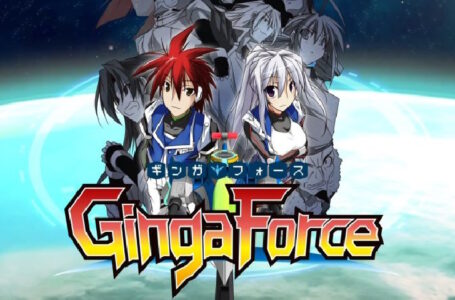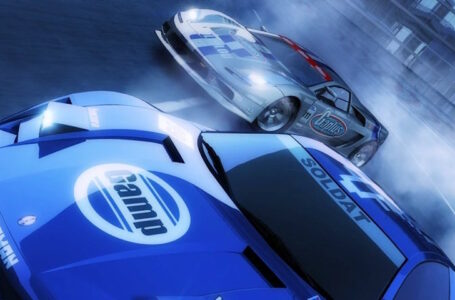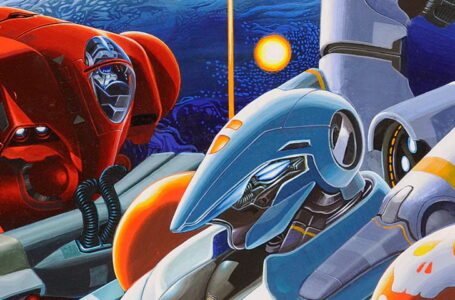2290: Final Blaster is far from the UGSF’s final battle
In 2290, war once again came to the United Galaxy Space Force’s doorstep, this time in the form of the Galaxian-Bosconian War of 2290. Believing this to be a particularly significant threat to the wellbeing of humanity, the UGSF denoted the military operation to fight back against the Bosconians as “Operation: Final Blaster”. Presumably they hoped that, if successful, this would mark the end of spacebound hostilities.
For a time, it looked like it might actually have worked; Operation: Final Blaster resulted in the UGSF reaching the Bosconian homeworld and defeating the enemy once and for all. This led the Bosconians to retreat; gone, but not forgotten.
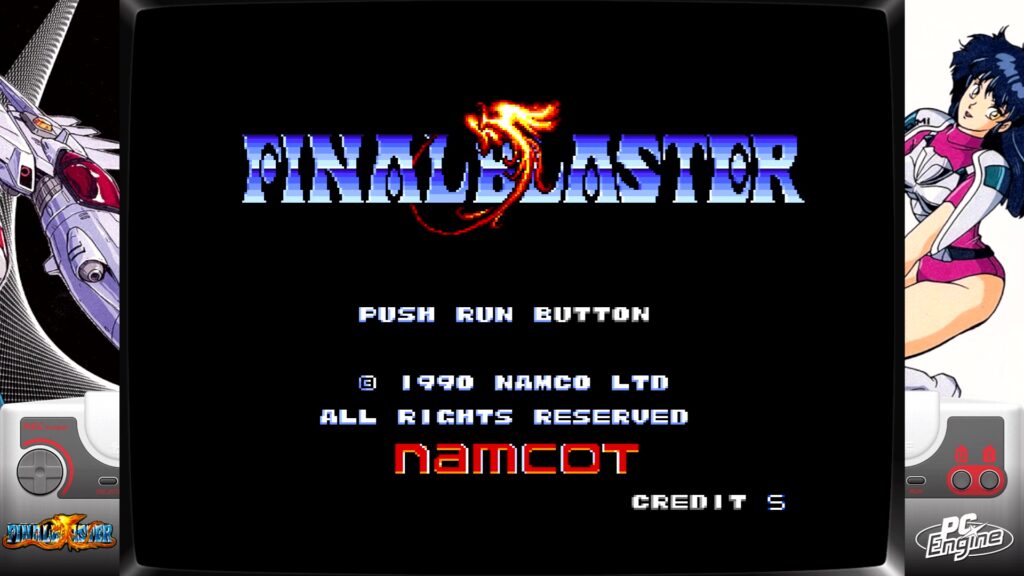
During Operation: Final Blaster, the United Galaxy set about rebuilding on the planets that had been devastated by the previous wars. And, in an attempt to finally rid United Galaxy-controlled space from alien threats, the company General Resource Limited — yes, the same one from back in 2040 — established its own band of intergalactic mercenaries, known as Bounty Hounds. That’s a story for another day, though.
Final Blaster, the video game, was released for PC Engine in 1990 by Namco’s home console division Namcot. Sadly, it never got a western release, though there is no Japanese text in the game to make it inaccessible to English-speaking audiences.
Final Blaster was initially developed by Namco’s subsidiary N.H. System, but this company went bankrupt in 1990, so the project was handed to Japanese developer Nova. Although not formally tied to Namco, Nova took on a number of projects for Namco over the years, including Final Lap, Mappy Kids and Rolling Thunder for Famicom, Burning Force for Mega Drive and Märchen Maze for PC Engine.
In the case of Final Blaster, the developer Aisystem Tokyo assisted with the programming side of things; their work over the years has included a variety of arcade ports for Namco and Taito, among other publishers.
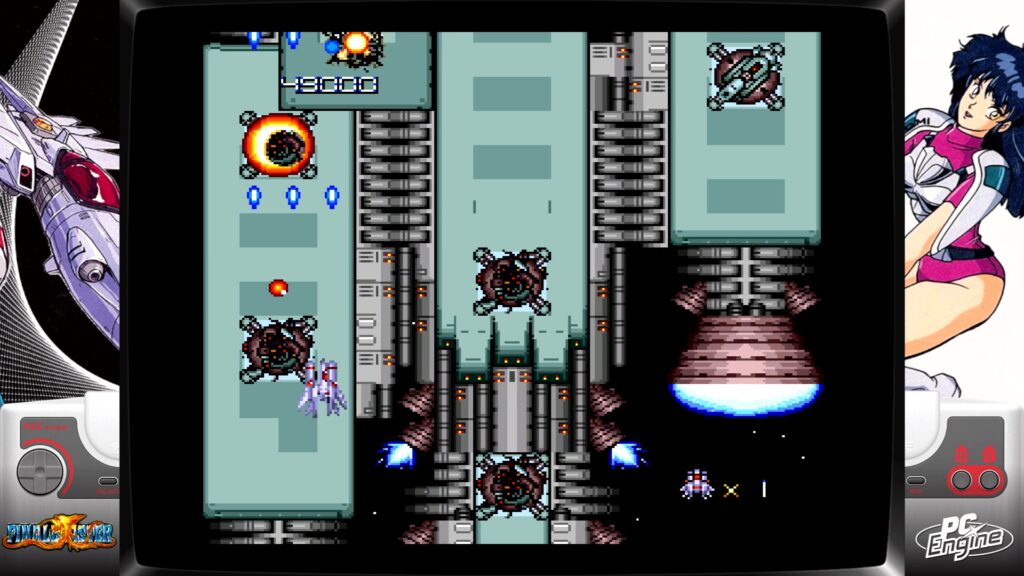
Final Blaster is, at first glance, a quintessentially “PC Engine” shoot ’em up. It’s a full-screen vertically scrolling shooter in which you take control of a moderately sized ship moving over a series of interesting backgrounds, taking down pre-scripted and heavily choreographed formations of enemies before confronting a boss at the end of each stage.
Like most shoot ’em ups of this type, Final Blaster provides you with access to various power-ups, obtained by destroying a specific type of enemy and then collecting the canister they drop when it is either blue or red. Red canisters increase the amount of shots you can fire at any one time, whereas blue canisters provide access to new weapons and defensive options, including bullet shields, piercing lasers, powerful ring shots and homing missiles.
Normally, losing a life results in losing all your power-ups, but your ship does eject a green capsule when destroyed. If you’re quick, you can nab this to recover some of your power — though how practical this is primarily depends on how far up the screen you were when you were destroyed. This adds a bit of risk-versus-reward to the game — when sitting further up the screen, you’re more likely to be able to recover your power-ups if you cark it, but you’re also more likely to cark it.
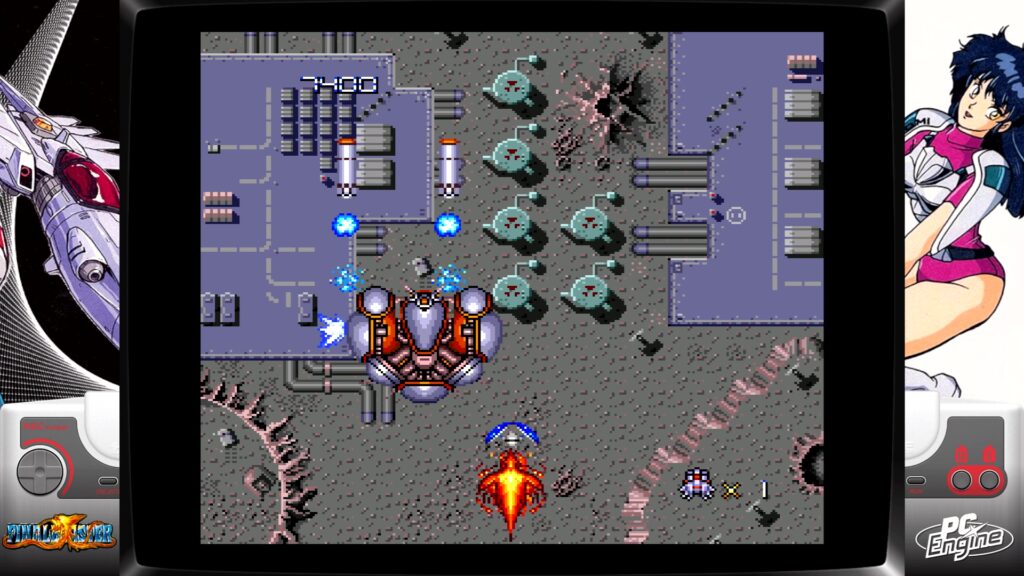
A notable addition to the usual formula is the charge shot, whereby holding the fire button rather than tapping it allows you to build up power and eventually unleash a flaming phoenix. This is an immensely powerful shot that pierces through enemies, and is a godsend when facing more powerful, larger enemies or strings of dangerous gun turrets all conveniently lined up, just waiting to be destroyed.
Another interesting wrinkle to Final Blaster’s format is that you have a limited amount of control over the scrolling. As you move up the screen, the scrolling will accelerate, while moving down will actually reverse it for a short period. There’s a limit to how much you can do this in either direction, but it’s a fun additional layer of control you have over the experience as a whole — and can sometimes make the difference between life and death if used effectively.
There is a strong emphasis on learning the levels in Final Blaster, because without being ready for the various incoming attacks, you will almost certainly find yourself destroyed in pretty short order. The game is rigorously choreographed, and so it’s extremely important that you find yourself in the right place at the right time; attempting to play in a “reactive” way is a recipe for disaster.
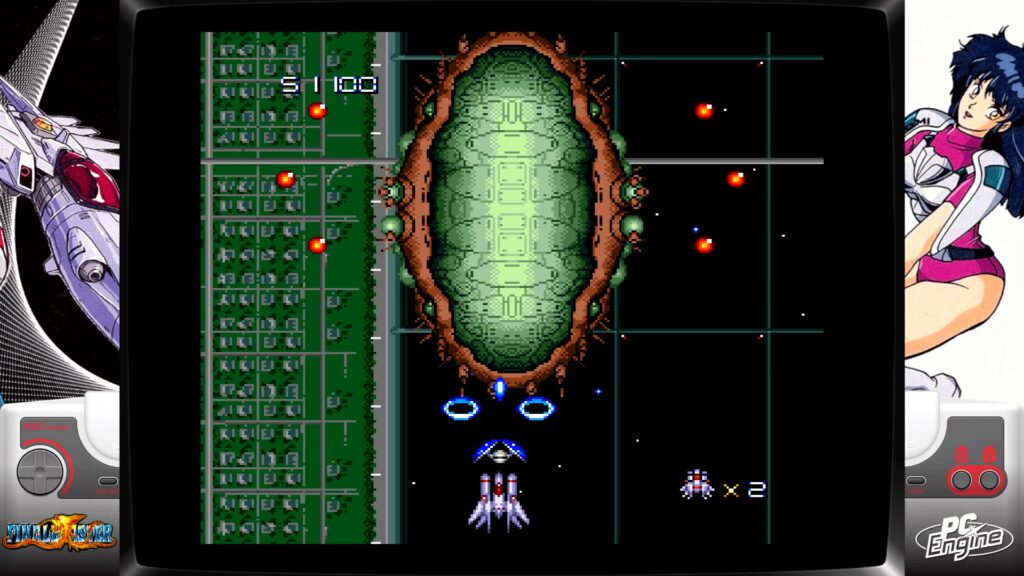
This could potentially be offputting for newcomers to the genre — Final Blaster absolutely is not afraid to absolutely kick your ass within the first 5-10 seconds of gameplay — but it also makes the game enormously satisfying. As soon as you start spotting patterns and being appropriately ready for them ahead of time, you’ll find yourself making enjoyably rapid progress.
Each level is paced nicely, with a duration that feels just right to allow you to easily break it down into its component enemy attack waves — and the boss encounters, likewise, are challenging but fair. Much like the rest of the game, it’s highly likely that these will obliterate you without hesitation the first time you encounter them — though the more you play the game, the more you’ll come to recognise some of its visual conventions. Most of these are common sense, to be fair; flying merrily along in front of what looks like a large cannon is, as you might expect, probably a sure route to destruction.
The action is accompanied by some catchy music and some well-drawn graphics, but the real appeal here for longstanding Namco and UGSF fans is that Final Blaster features a variety of cameos from past Namco shoot ’em ups. The spy ship from Bosconian and Blast Off puts in a regular appearance, for example — though no “Condition Wed!” if you fail to hit it this time around — and the invincible flipping metallic Bacura boards from Xevious also have something to say about your efforts to blast the Bosconian forces.
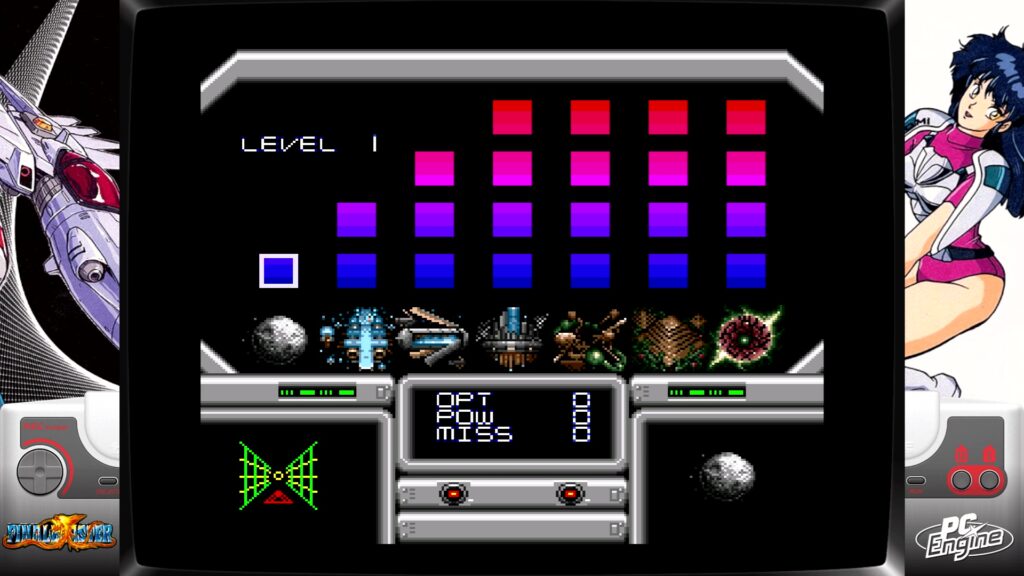
There’s also a dynamic difficulty level in play similar to Galaga ’88’s “Dimensions” system. Successfully complete a level without mishaps and the next level will be at a harder difficulty level; continue, and you’ll find the difficulty dropping back again. The ultimate aim is, of course, to one-credit clear the whole game and complete the final stage on the hardest difficulty setting — but that’s likely to take you quite a while when simply clearing the game is an achievement in itself.
Make no mistake, Final Blaster is hard as balls — it’s the main thing that drew criticism on its original release — but it’s also one of the most rewarding shoot ’em ups you’ll play. Making a small amount of progress is immensely satisfying, and this gives the game a formidably compelling quality that will keep you coming back time after time.
My only real criticism is that the game appears to force you to use all your five available credits to continue, even if you’re starting again from the first level. But then I guess the solution to that, as with any other shoot ’em up, is just to get good.
Join The Discussion
Rice Digital Discord
Rice Digital Twitter
Rice Digital Facebook
Or write us a letter for the Rice Digital Friday Letters Page by clicking here!
Disclosure: Some links in this article may be affiliate links, which means we may earn a small commission if you make a purchase after clicking on them. This is at no additional cost to you and helps support Rice Digital!
- Letter from the Editor: passing the torch - June 30, 2023
- Super Woden GP 2 is looking promising - June 30, 2023
- Inti Creates is making a 32 bit-style Love Live action platformer - June 26, 2023






